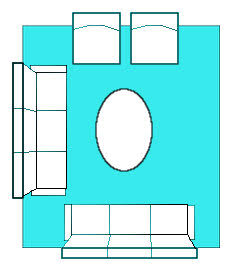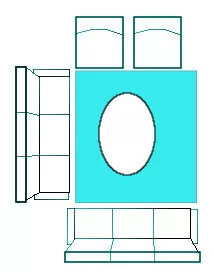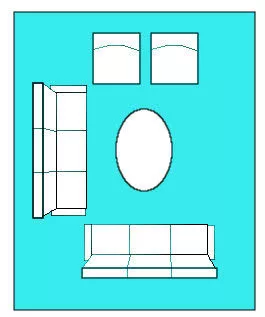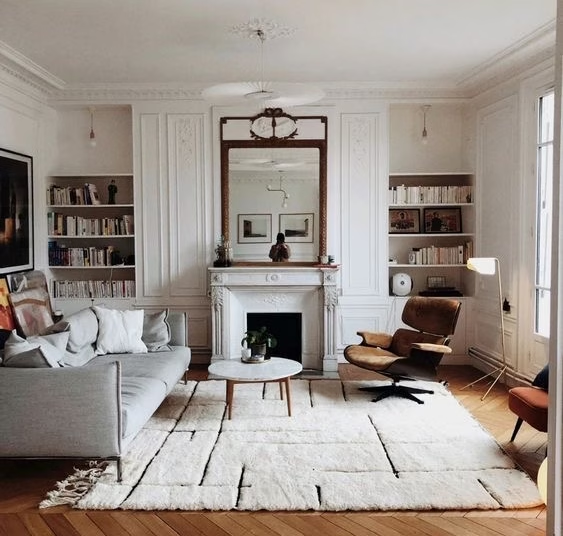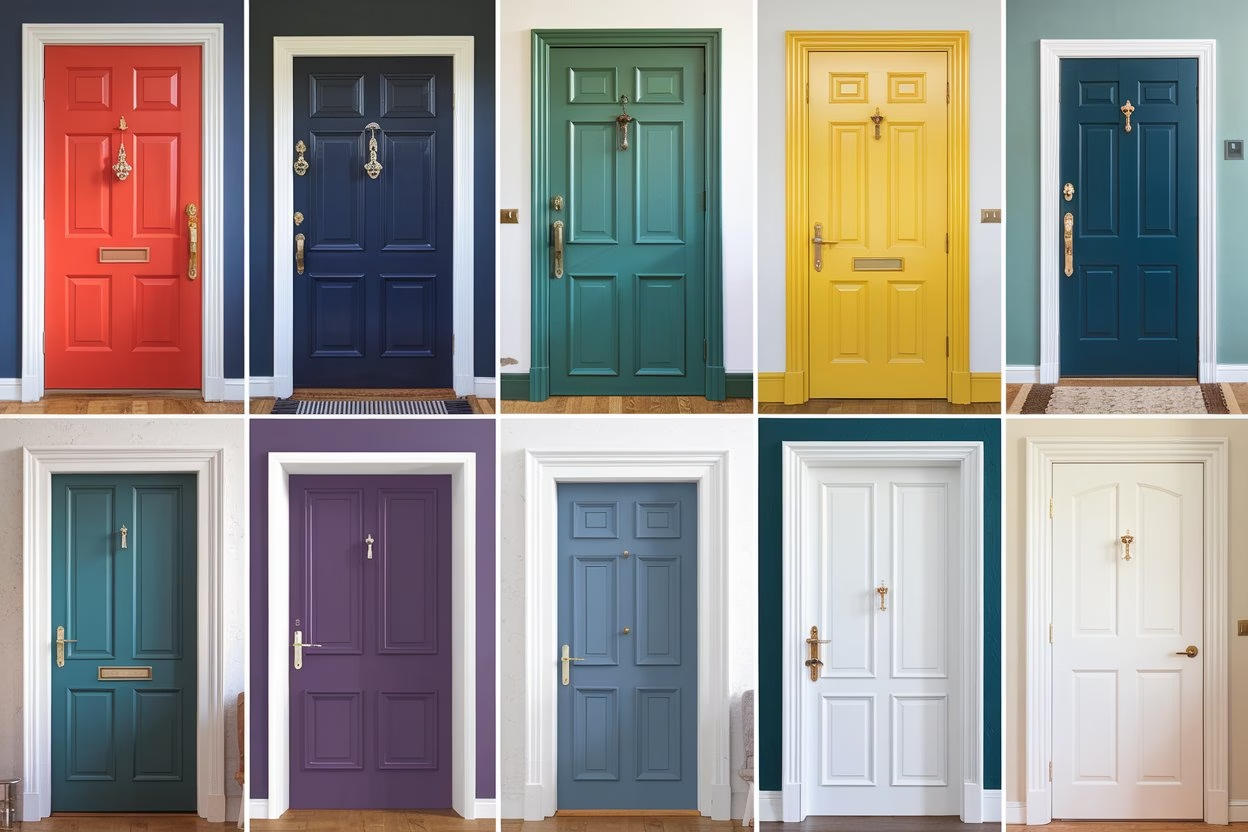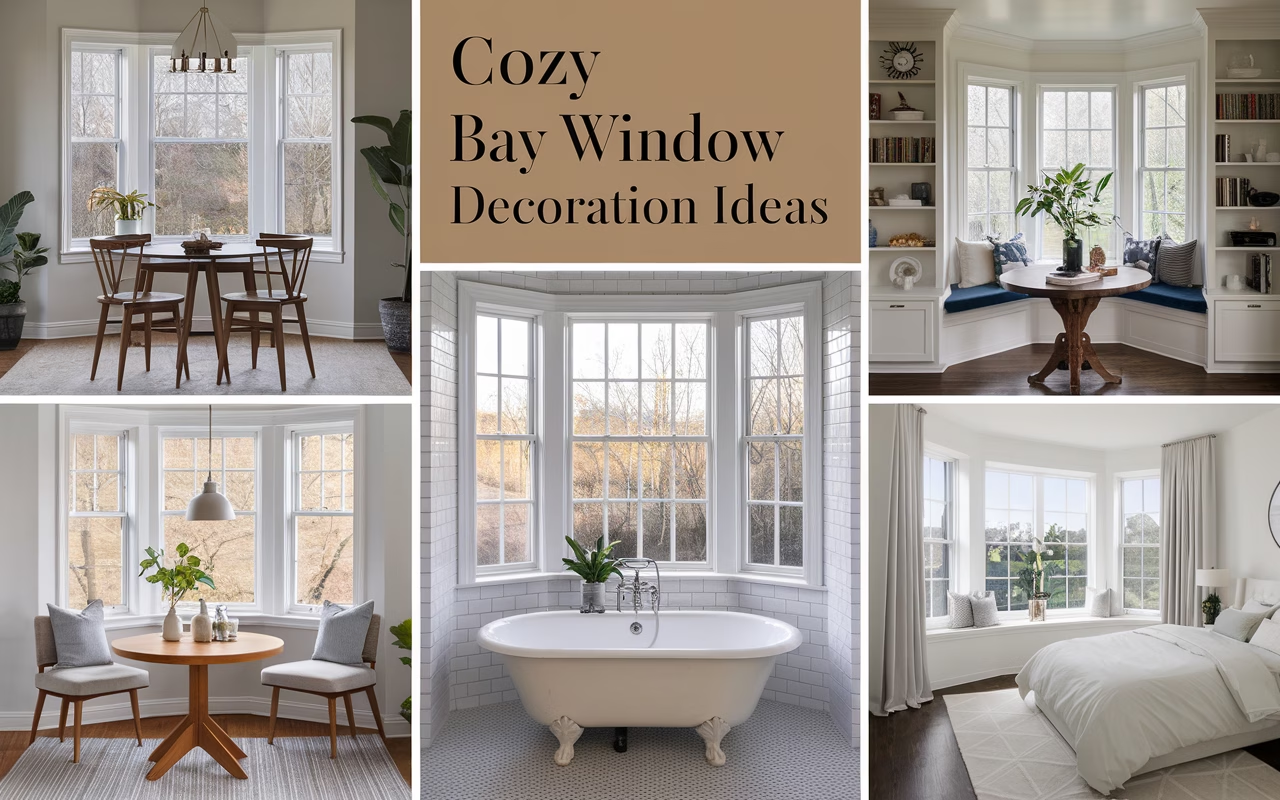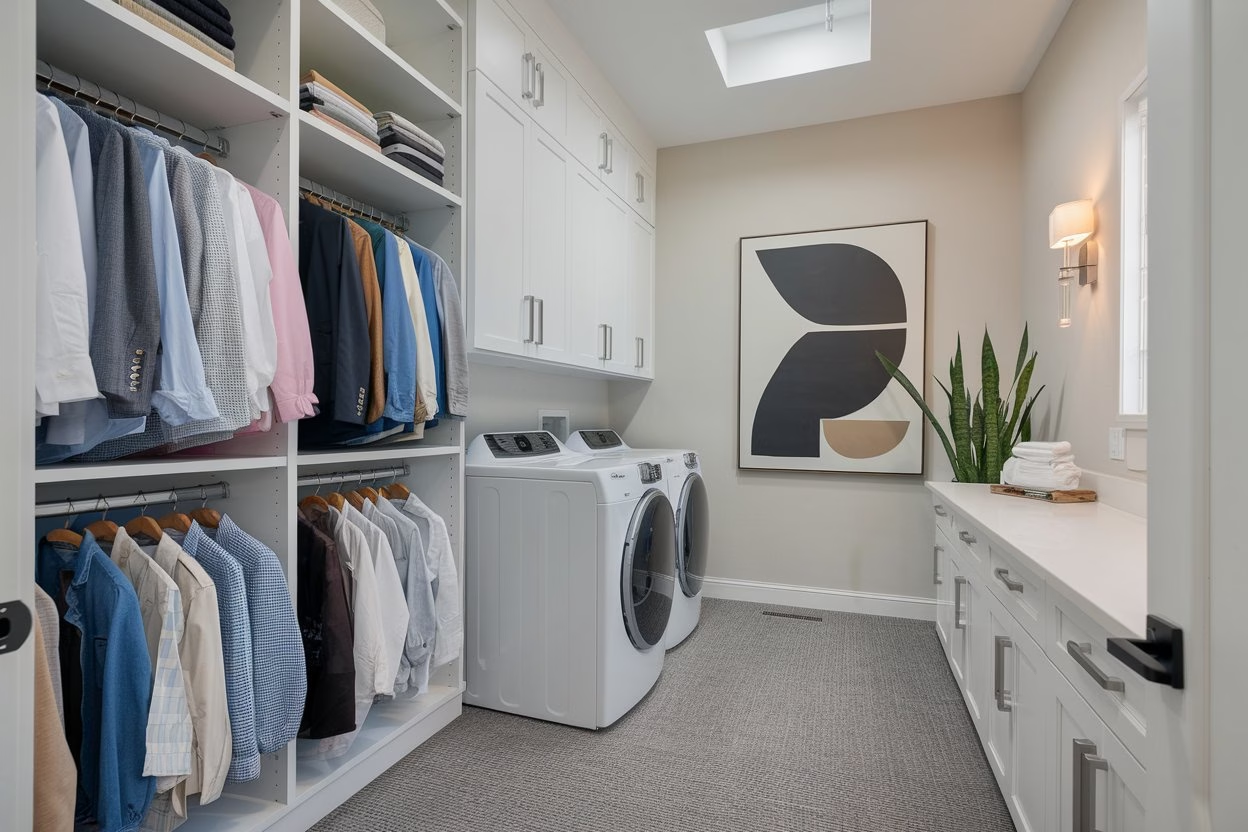Do you want a rug? Yes, but for what purpose and what room? This warm and practical decorative element requires asking the right questions. Where will I install it and what shape will it take?
Rugs do not always have a good reputation, considered old-fashioned or difficult to maintain. However, they can be great allies in terms of decoration.
Depending on their color, shape, material and location, they set the tone of your interior.
But beware of missteps! Hélène Paoli, director of the interior designer agency Archipelles, gives us all her advice on how to furnish your home with style thanks to rugs.
Why have a rug at home? Where to place it? In which room? Which material to choose? Discover the answers in this article.
Why have a rug at home?
The rug is not very popular in modern and urban apartments. “The rug is a culture, a bit like the culture of the painting hung on the wall, not everyone adheres to it”, explains Hélène Paoli.
In a more concrete way, a rug can be beautiful but above all useful. It has many assets to create pleasant rooms to live.
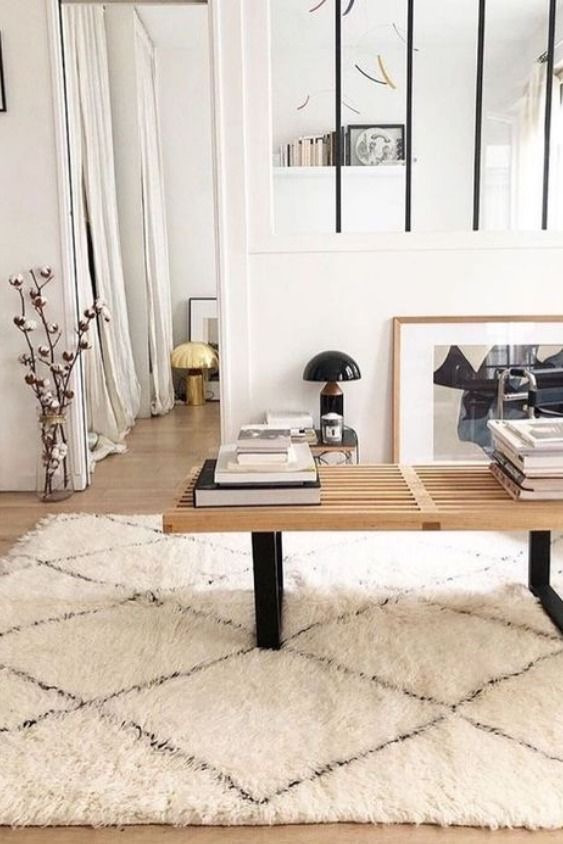
The rug to delimit the zones
“In large rooms such as totally open-plan living rooms, the rug helps to clearly identify the spaces,” says the interior designer. For example, you can place a large rug under the dining table and chairs to clearly delineate the dining room.”
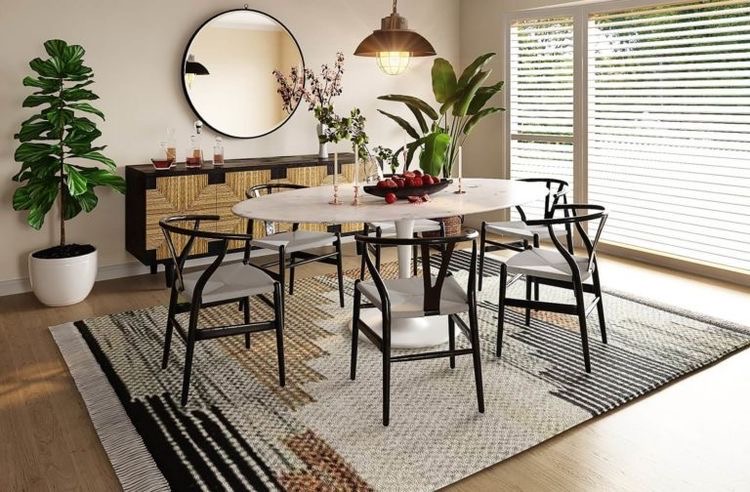
The rug brings warmth
Not everyone is lucky enough to have a beautiful waxed floor in their apartment or house. For floors such as tiles or linoleum, carpet can bring a certain warmth to the room, provided you favor natural materials such as wool.
In addition to making the spaces friendly, it improves the comfort of the inhabitants. Placed at the foot of the bed or at the foot of a dressing room in a bedroom, the rug will be much appreciated by bare feet, much more than a cool and hard floor.
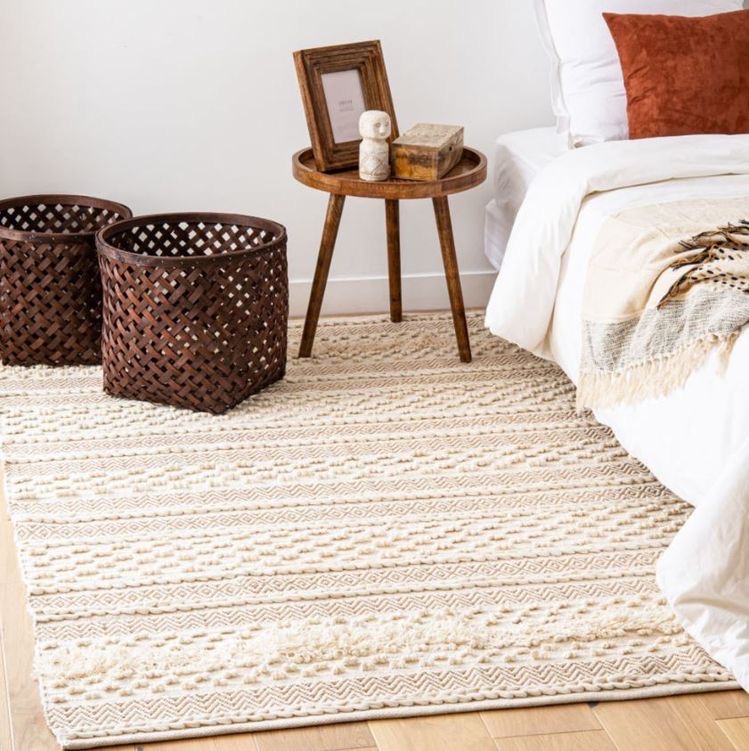
The rug dresses the room
“For floors that are a little out of date or that are not to the taste of the inhabitants or in harmony with the decoration of the room, the rug can be very useful. It can revive a dull parquet floor, recall a color code of the room or bring a touch of modernity to a too classic place”, says Hélène Paoli.
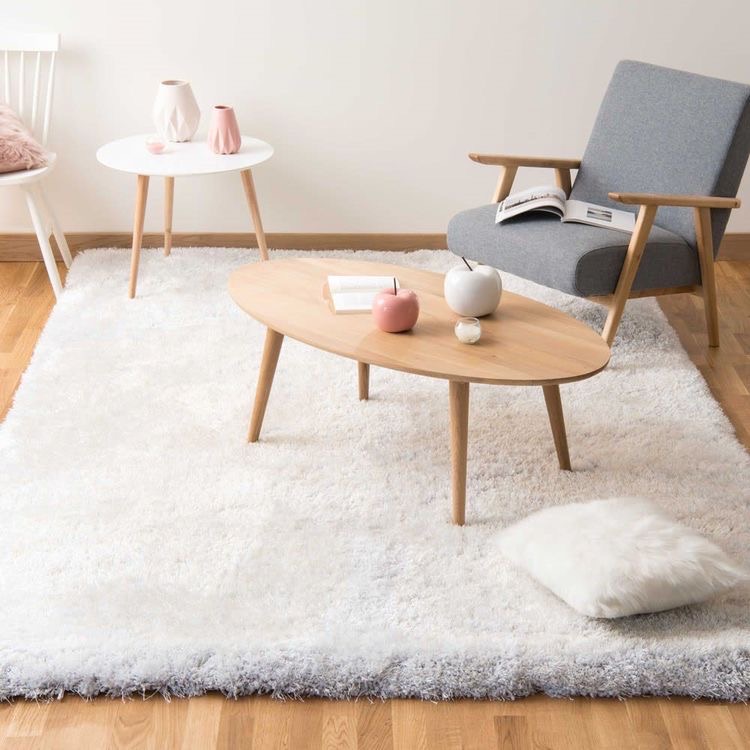
The rug is soundproof
The carpet also has soundproofing powers. Ideal for large rooms with few decorative objects or furniture, it works as a sound trap. Reducing the echoes of the room and isolating the neighbors below, the carpet can, in fact, play this role of sound insulator.
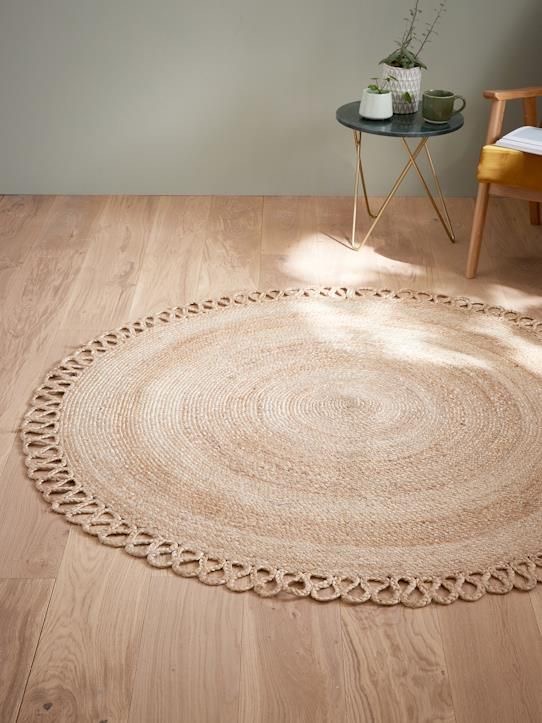
Position your rug: What are the pitfalls to avoid?
A rug is not easy to place in your home. You have to pay attention to many factors so that it does not interfere with traffic and does not require too much maintenance.
Hélène Paoli has some advice on this subject: “You have to be very careful about the location of your rug. Make sure it does not interfere with the opening of doors or closets.
In addition, slips on rugs are common. It is necessary to use a good anti-skid underlay to avoid any accident.
For anyone who doesn’t want to spend time picking up crumbs, choose a shag or braided rug in rooms such as the dining room. For this space, also avoid rugs with large loops, as chair legs could get caught in the wool.”
Finally, keep in mind that rugs can sometimes be thick, so they should be large enough to accommodate furniture in their entirety, otherwise a mismatch occurs between the floor level and the rug, creating imbalances.
A rug for which room?
The rug finds its place in many corners of the house: living room, dining room, bedroom, office … However, some rooms should be avoided.
“As a general rule, I do not recommend placing a rug in a humid area or in water rooms such as the bathroom or kitchen.
Having a rug in these rooms requires more care: you have to watch out for humidity and take it out of the room to air it out regularly. It is often said that rugs are traps for germs, and this is especially true in this type of space,” says Hélène Paoli.
We should also avoid the rug in the entrance, more likely to be soiled by dirty shoes.
Which type of rug for which room?
There are many types of rugs. The most popular are wool, long loop, mixed pile, dyed or short pile. There are also other natural materials such as sisal, rattan, sea rush or even leather. Not to mention rugs made of synthetic materials (mainly polyester). So which carpet to choose?
For places of relaxation such as the bedroom, comfortable carpets with long pile, large loops, thick and soft will find their place perfectly.
The cleaning will be easier because it will not be in contact with food and you will walk on it with bare feet.
In children’s rooms, prefer plastic mats, similar to beach mats that are not afraid of stains and whose small budget will allow you to change them as your little one grows.
Adapting your rug to your lifestyle
In the living room and other living spaces, anything goes. It is simply necessary that the choice of the rugt is in adequacy with your way of life. “White carpets should be avoided in places where people pass through or where there are frequent parties, for example. A wine stain is quick and often irrecoverable,” says interior designer Hélène Paoli.
The dining room will prefer a low pile rug to facilitate the cleaning and secure the movement of chairs around the table.
If you really want to install a rug in your bathroom or kitchen, despite the humidity and the difficulty of cleaning, make it easier for yourself by choosing a natural material (sea rush, rattan…), with an anti-slip and waterproof underlay. Don’t forget to air it regularly.
How to place your rug in the room?
Once you’ve chosen a rug, the most enjoyable, but perhaps most difficult, part is integrating it into your decor.
For Hélène Paoli, the key to a good design around the carpet is to respect the surrounding surface.
“When choosing a round rug, whether it is large or not, it needs to be seen. It will be highlighted only if the surface around it is large enough. The same goes for rugs with more original shapes like octagons or other geometric shapes,” she advises.
For the superposition of rugs, the problem is elsewhere. The difference in level created by the pile can unbalance the furniture.
For classic shapes, nothing is forbidden, play on the colors to recall the decorative details of your room.
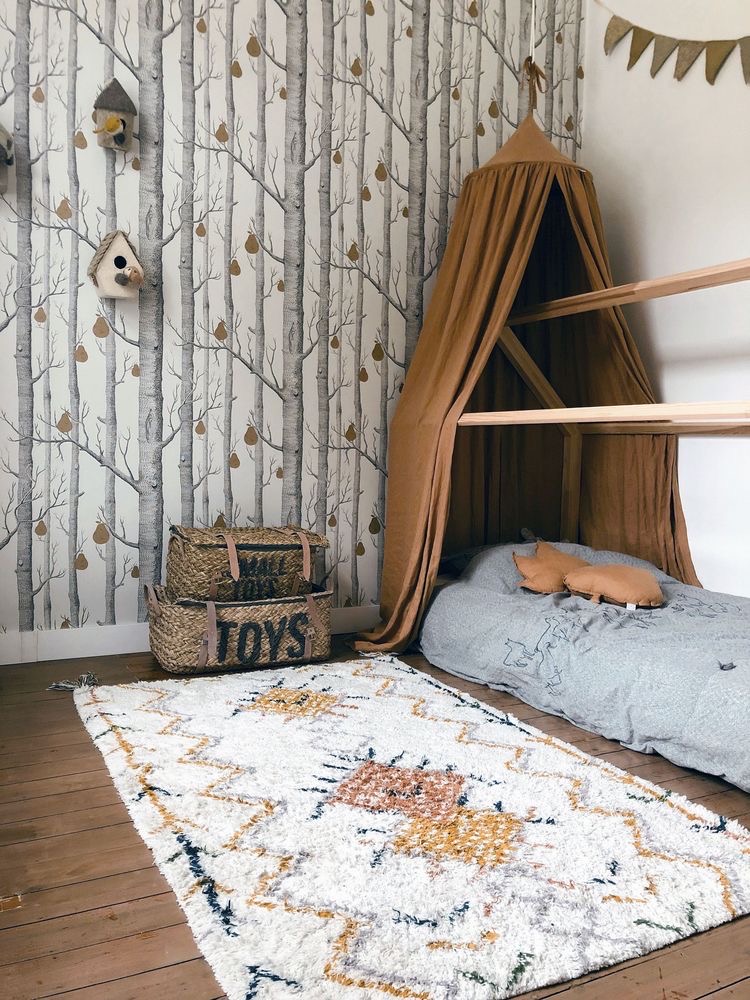
What about outdoor rugs?
Rugs can be used outdoors, but again, choose carefully.
“For terraces, choose rugs made of completely synthetic material, braided or coated, such as mats. Remember that whatever the nature of your rug, it should not be left outside in rainy weather,” says Hélène Paoli.
In summary, the rug outside is possible, but only in good weather.
How to Choose the Perfect Runner or Rug for Your Entryway and Hallway?
When it comes to decorating your home, the entryway and hallway are often overlooked. However, these spaces are the first impression your guests have of your home, and they deserve just as much attention as the rest of your living space. One simple yet effective way to enhance the aesthetics and functionality of your entryway and hallway is by choosing the right runner or rug. In this article, we’ll guide you through the process of selecting the perfect runner or rug for these high-traffic areas, ensuring that your home welcomes everyone with style and practicality.
Understanding the Role of Entryway and Hallway Runners
Before diving into the selection process, it’s essential to understand the role that entryway and hallway runners play in your home. These long, narrow rugs serve several purposes:
- 1. Protection: Runners protect your floors from wear and tear caused by foot traffic, especially in areas that see a lot of action.
- 2. Style Enhancement: They add a touch of style and personality to an otherwise utilitarian space, helping to create a welcoming atmosphere.
- 3. Safety: Runners can prevent slips and falls, especially when the floor is wet or slippery.
- 4.Noise Reduction: They can help reduce noise levels in your home by absorbing sound.
Now that you understand the importance of entryway and hallway runners let’s delve into the steps to choose the right one:
Step 1:Measure Your Space
The first step in choosing the perfect runner is to measure the space where you plan to place it. Measure both the width and length of the hallway or entryway to determine the appropriate size for your runner. You want it to fit comfortably without overcrowding the space.
Step 2: Consider Material and Durability
The material of your runner is crucial, as it determines its durability and maintenance requirements. Here are some popular materials to consider:
- 1. Wool: Wool runners are known for their durability, softness, and natural resistance to stains and dirt.
- 2. Synthetic Fibers: Runners made from synthetic materials like nylon or polyester are often more budget-friendly and easy to clean.
- 3. Natural Fibers: Jute and sisal runners add a touch of texture and are eco-friendly, but they may require more maintenance.
Choose a material that suits your lifestyle and the level of foot traffic in the area.
Step 3: Select a Design and Style
The design and style of your runner should complement your home’s overall decor. Consider factors like color, pattern, and texture. For a traditional look, opt for classic patterns like stripes or florals. For a more contemporary vibe, go for bold colors or abstract designs. Make sure the runner’s style resonates with the rest of your interior design.
Step 4: Test the Runner
If possible, visit a store and test the runner in person. Walk on it, feel the texture, and see how it complements your space. This hands-on approach can provide valuable insights into how well the runner will work in your home.
Step 5: Check Reviews and Recommendations
Before finalizing your purchase, check online reviews and seek recommendations from friends or family who have bought similar runners. Real-world experiences can help you make an informed decision.

How to install a rug?
Depending on the room where you will install the rug, it is necessary to ask yourself a few questions:
- In which room?
- For what purpose?
- In what material?
- What color?
- The size?
The key is to preserve the harmony of your decoration.
Small rugs of 70×140, 90×160 of different diameters can be installed in bedrooms, entrances, bathrooms and transitional spaces. Medium rugs of 120×180, 140×200 or 170 x240 fit in bedrooms or living rooms, while large carpets of 200×300 are more appropriate for good sized living and dining rooms.
The size is important depending on the conformation of your rooms. Some examples of layouts:
For the bedroom
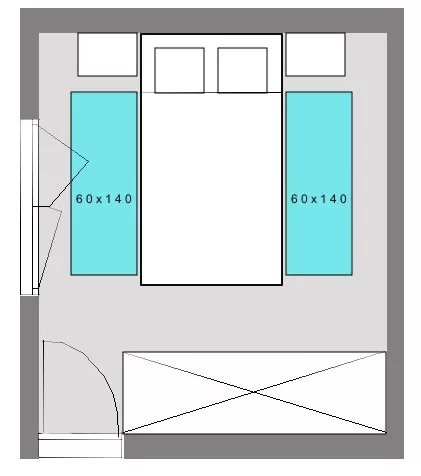
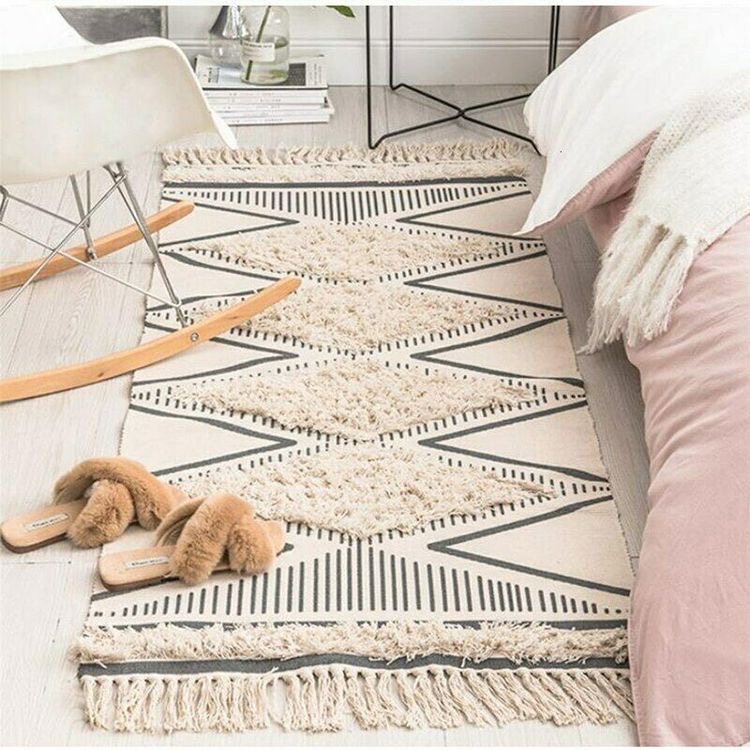
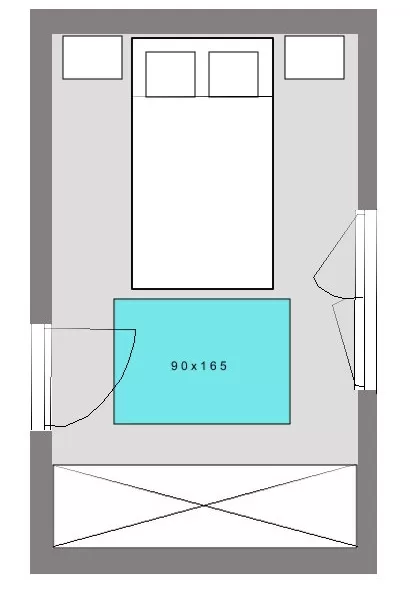
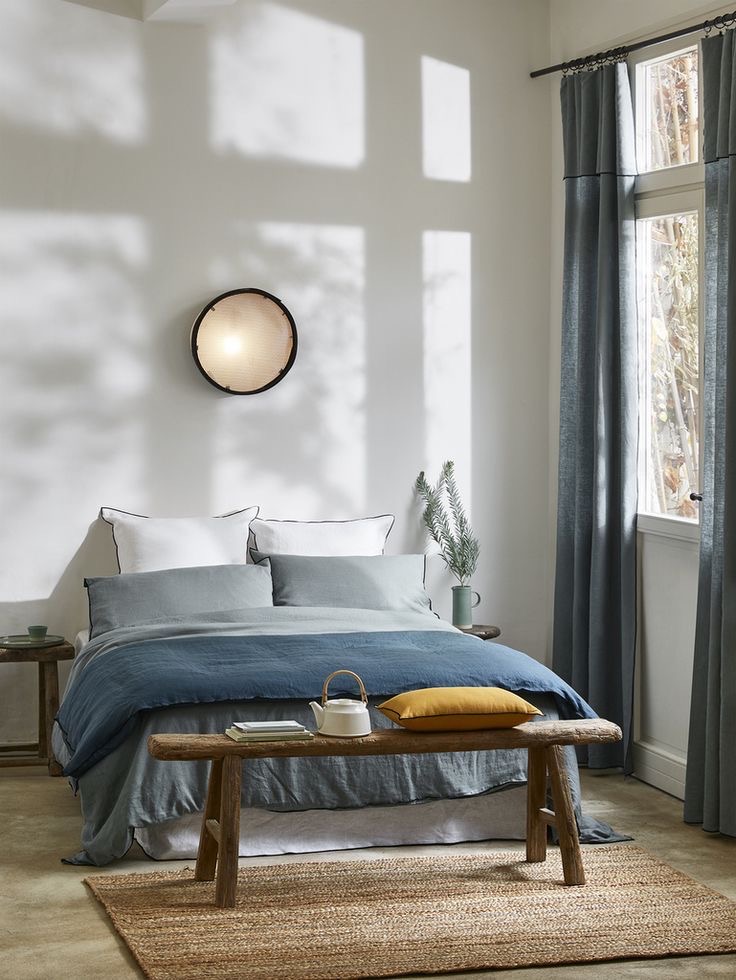
For the entrance
There are long rugs for the hallway of an entrance. They allow not to dirty when you enter the house and to prepare the way.
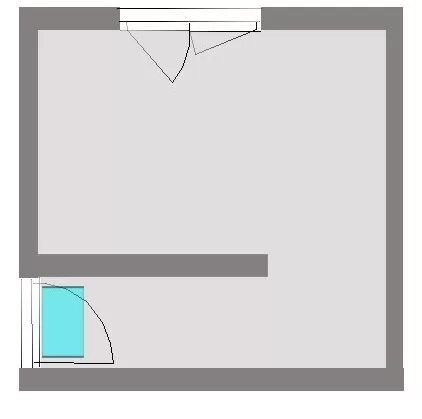
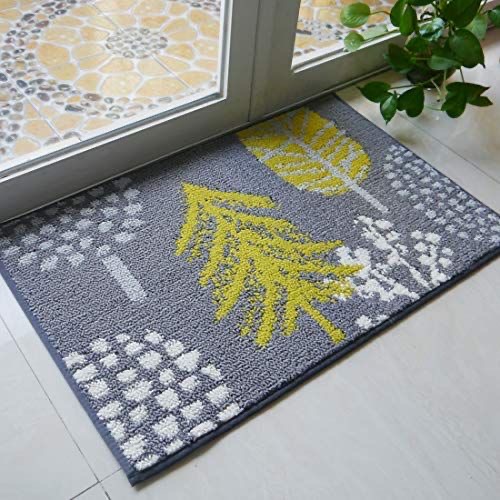
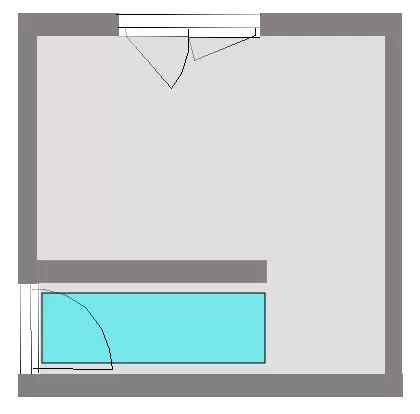
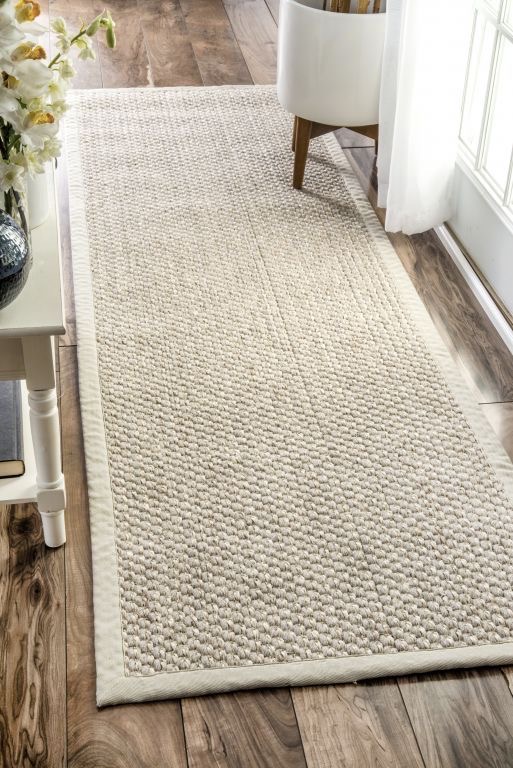
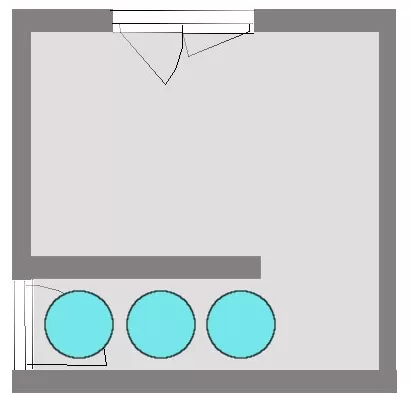
The dining room
The carpet in the dining room should be large enough not to get in the way when you pull up a chair to sit. It is important to keep between 50 and 60 cm around the table.
For a rectangular table :
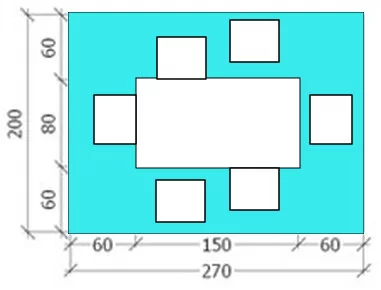

for a round table :
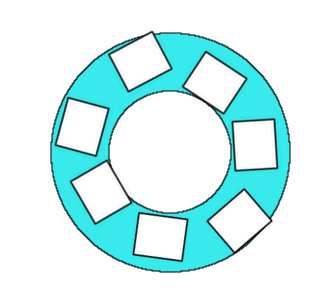

The Living Room
The ideal carpet for the living room is at least as long as your sofa and its width allows you to turn around the coffee table while keeping your feet on the carpet. If you have a large living room, the size of the carpet can be increased. A 200×300 rug will create great effects. On the contrary if your room is small or if you have armchairs, you can opt for the round rug.
